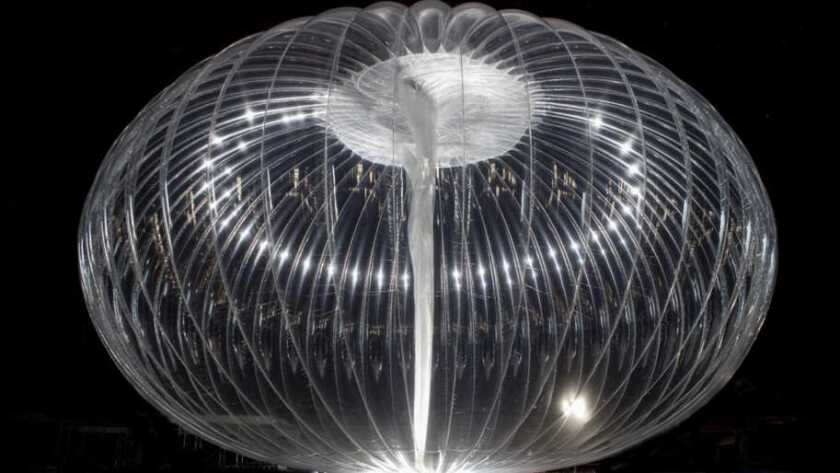The balloons (see picture), flying at 18km above the surface, connect into CenturyLink’s experimental E-band backhaul network – in the 71-76 and 81-86GHz bands – and deliver 4G mobile to customers on the ground.
The service was installed in a rush following the magnitude 8.0 earthquake that hit the Amazon region in Peru.
“After requests from the government of Peru and Telefónica, we quickly re-directed a group of balloons to the impacted area,” said Alastair Westgarth, CEO of Loon, which is owned by Alphabet.
Two days later “the first balloons arrived and began serving LTE to users below. More are on the way.”
Luis Ladera, data and internet product director of CenturyLink Peru, said: “Being able to set up ground stations and connect the balloons to our internet backbone to reach areas with complete outages meant those most affected had the ability to communicate with loved ones and to have access to critical information.”
CenturyLink holds the experimental E-band licence in Peru for Loon’s backhaul services, which are still in a testing phase for commercial use. E-band is permitted worldwide for ultra-high capacity point-to-point communications.
The relationship with CenturyLink dates back two years, when the then Level 3 Communications provided serviced in Peru following a flood. CenturyLink completed its acquisition of Level 3 at the end of 2017.
Loon began negotiating a commercial contract with Telefónica several months ago, according to Westgarth, in order “to extend mobile internet access to unserved and underserved areas of Peru, specifically remote parts of the Amazon region”.
Loon has already started work when the earthquake happened in late May. “In the past month, these efforts had accelerated to the point where we had begun installing infrastructure and intermittently testing with balloons serving LTE over the region. The progress was very encouraging,” said Westgarth.
Loon has also provided balloon-mounted service to Puerto Rico, working with AT&T and T-Mobile, after Hurricane Maria in 2017. Westgarth said: “In Puerto Rico, it took about four weeks for our balloons to begin providing service. In this instance, we were able to begin providing service in about 48 hours, because we had already deployed the building blocks of the Loon network.”
He added: “Before we can begin providing service, we need to install ground infrastructure, integrate with a mobile network operator’s network, secure regulatory and overflights approvals, and of course launch balloons and navigate them to a desired location. However, with Loon already active in a country, as is the case in Peru, our ability to respond to a natural disaster can be measured in hours or days rather than weeks.”
Last year Ajit Pai, chairman of the Federal Communications Commission (FCC), proposed a $954 million plan to restore and expand communications networks in Puerto Rico and US Virgin Islands following Hurricane Maria.
Loon is also working with HAPSMobile, owned by SoftBank, on a $250 million project to use balloons and uncrewed aircraft to deliver wholesale telecoms services to people on the ground. And Loon is also considering expanding another balloon-supported 4G network from Kenya to Uganda, Capacity reported last September.






